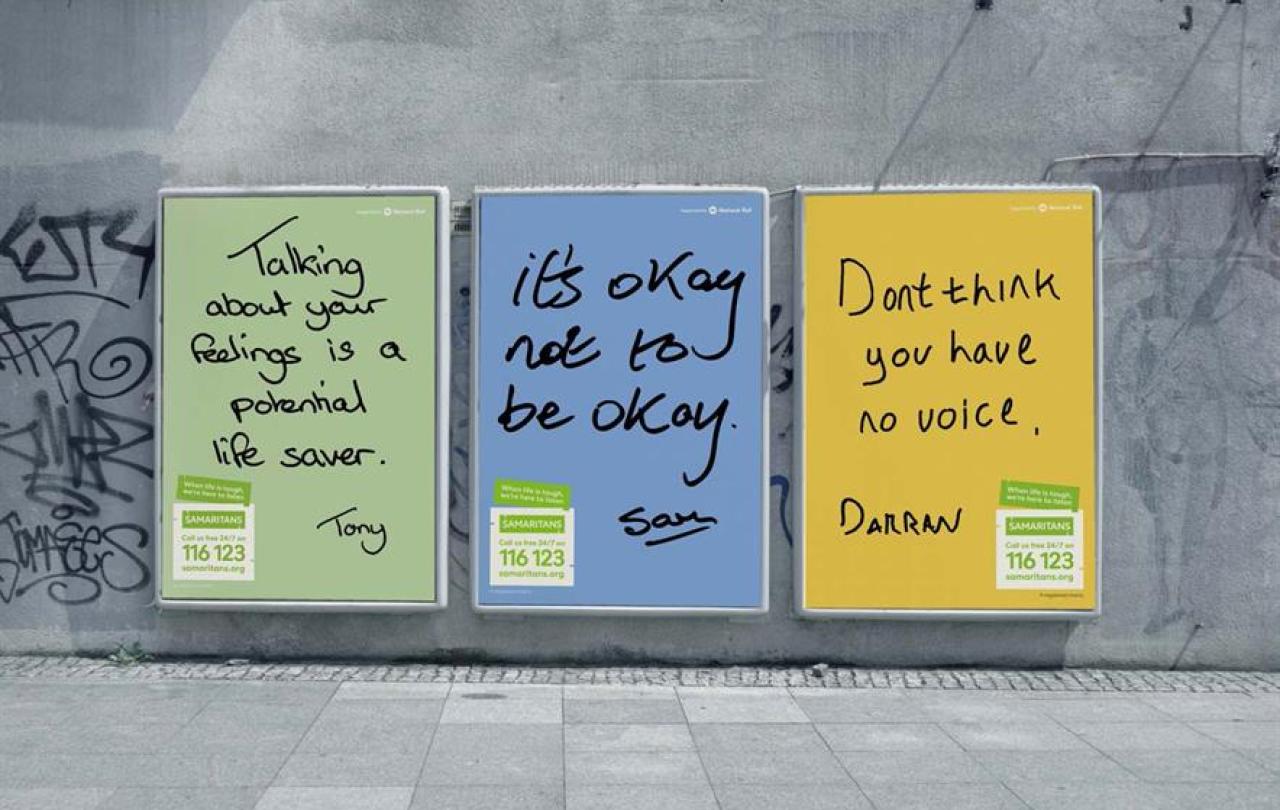
The squeaky black shoes are back in the hall, and by now all the white polo-shirts in the land (except aged 4-5, slim-fit) have been snaffled by harassed mums and dads. Yes, it is that time of year again – the time for newspaper editors to dredge up some statistics about the rising number of “school refusers” – anxious young people whose squeaky shoes and white polo shirts are looking set to never leave the house.
The numbers are “spiralling” frets the Guardian, and the Daily Mail asks “Are you raising a ‘ghost child’?” Forth come the stock images of a sulky teenage girl pulling the duvet over her face, or a young boy with an oversized backpack and hands clamped firmly over his ears. A parent, frowning, is quoted as saying that the school isn’t doing enough. A headteacher, eyebrows knitted, says how difficult it is without the support and cooperation of the parents. Then everybody shakes their heads and blames the pandemic.
In my time as a School Chaplain, before the pandemic, I saw how truly awful school refusal is – for everyone involved. Beneath the covers, underneath the backpack, there is actually no “refusal” of anything – in fact, there is a campaign to get rid of this term, which I heartily support. Refusal implies there is a choice, but when a young person feels so overwhelmingly anxious and afraid, there is no choice for them, other than fight, flight, or freeze. Parents and caregivers feel judged, teachers are largely helpless. Social workers, when they get involved, quickly feel like they are the enemy of absolutely everyone involved. Surrounding any long-term school refuser there is often a hot mess of frustrated adults, and underneath the frustration, sadness.
No Scouts, no community choir, not even traipsing down to the park to hang out informally with their peers. Instead, anxiety traps them into the perceived safety of home.
Why sadness? Because we know that, regardless of our views on the importance of cookie-cutter educational attainments, no young person should be isolated. Even families who are committed and evangelistic about home-schooling will also schedule social activities for their children, be it membership of various clubs and organisations or group sessions of learning with other home-schooled kids. But the school refusers I have known have typically also refused anything like that. No Scouts, no community choir, not even traipsing down to the park to hang out informally with their peers. Instead, anxiety traps them into the perceived safety of home, that one tiny corner of the world where they have a sure sense of belonging and some modicum of control.
With the idea of “belonging” in mind, perhaps it is helpful to think about what a school actually is. The word school is multi-faceted in meaning. In nature, it denotes a group of fish, all swimming together. Such behaviour would seem counter-intuitive, since it means that all the fish are then competing for the same food or other resources. But ask any fish and it will tell you that being part of the group is itself a resource, enhancing their ability to find food and to protect themselves from predators. We could put this a more familiar way: a school is where the whole is greater than the sum of its parts.
There’s also another meaning to the word school – groups of creatives or philosophical thinkers whose styles and methods influence and complement each other, e.g., “His paintings are those of the Impressionist school.” We can see how, in these schools, people spark off one another, constantly developing and refining their own work in response to the work of others. Those with greater skill and experience mentor those who are just beginning. In this respect, we could say that a school is where people can push the boundaries of human creativity and knowledge.
Since the ancient days, when learners gathered around the Greek philosophers, first to listen, then to discuss, and then to refine ideas, we have gathered our young people into schools for the purpose of educating them. We have long acknowledged that the best learning is a group activity which takes place over time. This is why home schoolers also schedule the clubs and activities – not just because children need friends (although that is important) but because there is a particular “other” kind of human progress that happens when we have to rub along with other people. When learners are placed in groups, ideas can be tested, boundaries can be overcome, creativity meets with critique - the whole quickly becomes greater than the sum of its parts.
You may notice that many schools promote themselves as being a “learning community” or a “family.” It’s not just about being twee – research shows that promoting a sense of belonging reduces the amount of school refusal and non-attendance. We know that belonging matters, as Belle Tindall has recently discussed, and that a sense of belonging can impact our health and even our mortality. (“Well, I told you so!” says the fish.)
This was something the early Christians knew too. In the first few decades after Jesus’s life and ministry they gathered in groups to pray and to discuss, just like those earlier followers of Plato and Aristotle had done. There was an eagerness to learn from those who had heard Jesus’ teaching first hand, and to develop and refine their understanding of what that teaching could mean in practice. It was a school, although they called it a church – or strictly speaking an ecclesia in the Greek, which just means a gathering of people.
In the ecclesia there was good natured debate, but also some spicy disputes and arguments, along with a lot of discussion about who was “in” and who was “out” - something which is also a hot topic in the school playgrounds of today. Into that context, Paul (one of the first leaders of the ecclesia) wrote that the church was a bit like a human body, in which:
The eye cannot say to the hand, “I don’t need you!” And the head cannot say to the feet, “I don’t need you!”
His point was that belonging is about knowing not just that you belong but that you are needed. In a human body, different parts have different roles, and Paul also asks his readers to consider this point:
“If the whole body were an eye, where would the sense of hearing be? If the whole body were an ear, where would the sense of smell be?”
I have seen that schools do often try very, very hard to communicate to young people that they belong. But, shackled to the syllabi and never more than a few short months away from the next round of exams or individualised assessments, it’s much harder for schools to show young people that they are needed. With our present system, how can we show young people that, even if they are not predicted to be the student in the class who gets straight A’s, their presence there in the group and their role in the learning process is vital, and contributes to the learning of others?
When it comes to the presence of absence among our young people, schools have often gone as far as they can practicably go, as have parents, as have social workers. And the young people themselves? Well, they are stuck – biologically their only options are fight, flight, or freeze.
So that leaves us, the society that over-emphasises individualised achievement, that glorifies celebrity and individual success. In adulthood we so quickly forget how to “do” school, how to model it to our young people, swimming all together in a way designed to promote human knowledge, protect each other from danger or even just to ensure that everyone gets fed. No wonder our young people absorb a sense that their presence isn’t needed, when in so many areas of life it’s every fish for themselves.
As adults, perhaps we should be asking ourselves the question: why aren’t we in school?





